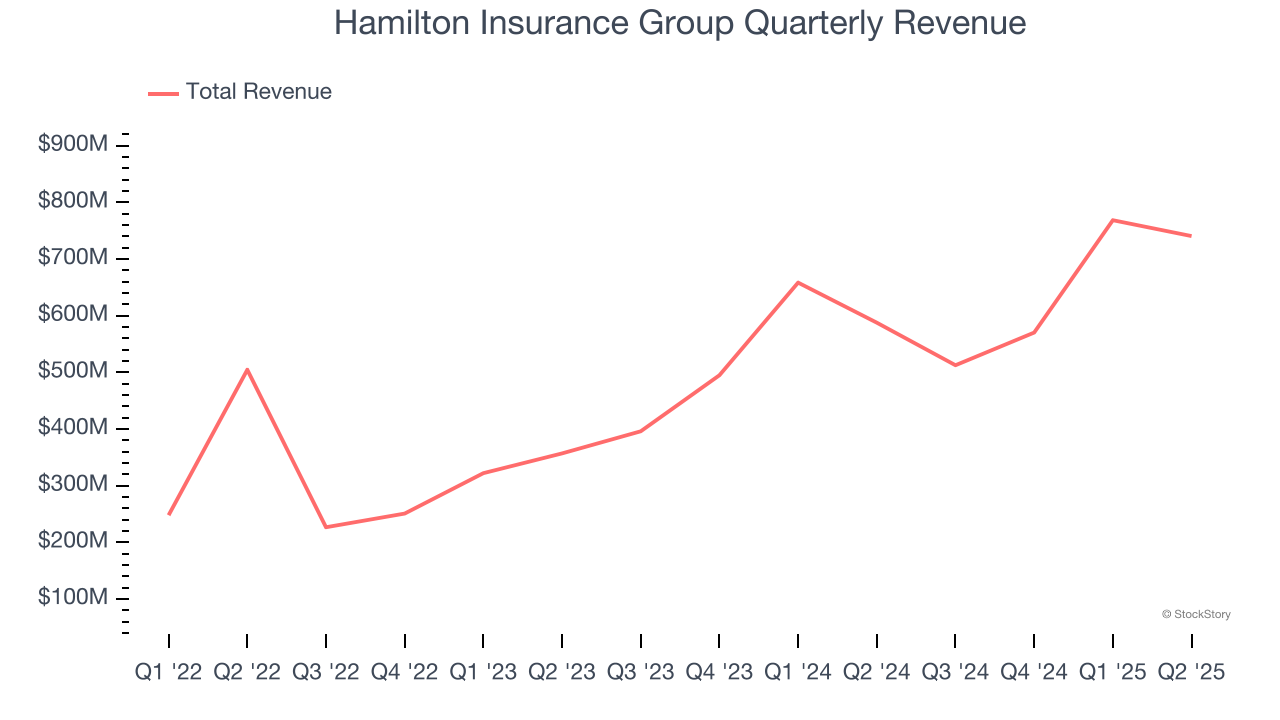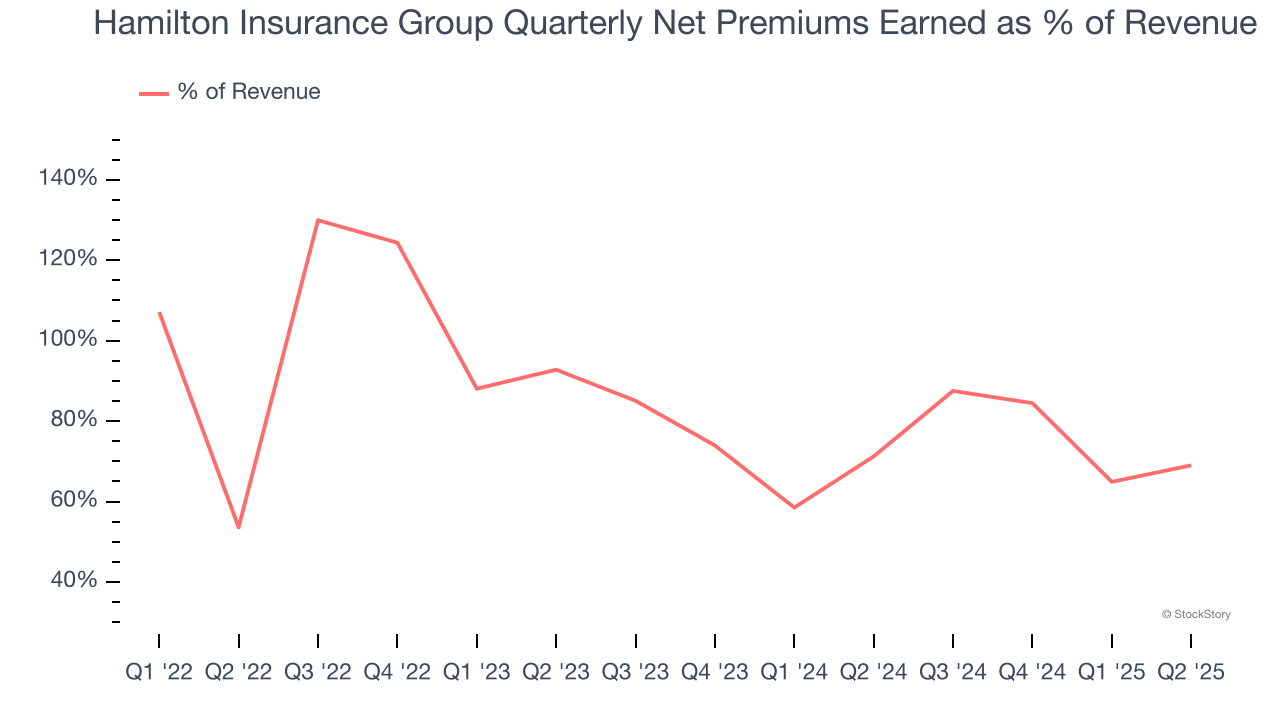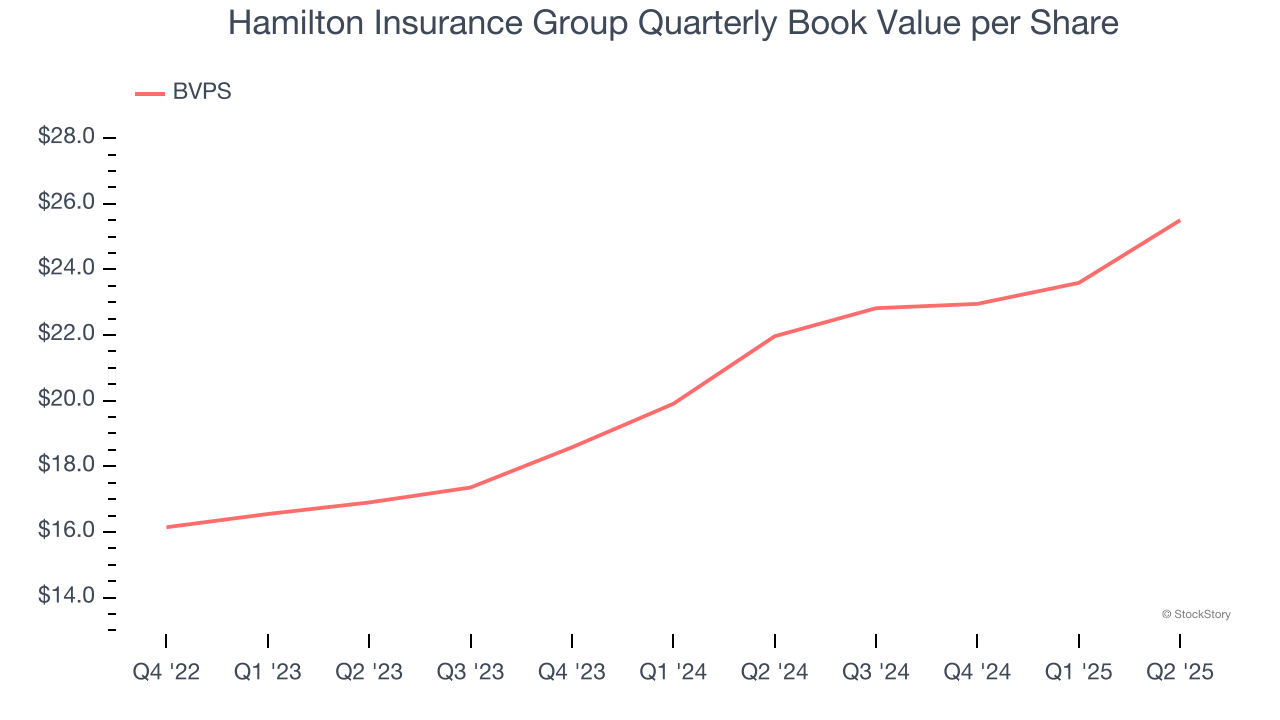
Specialty insurance company Hamilton Insurance Group (NYSE: HG) reported Q2 CY2025 results exceeding the market’s revenue expectations, with sales up 26% year on year to $740.8 million. Its GAAP profit of $1.79 per share was significantly above analysts’ consensus estimates.
Is now the time to buy Hamilton Insurance Group? Find out by accessing our full research report, it’s free.
Hamilton Insurance Group (HG) Q2 CY2025 Highlights:
- Net Premiums Earned: $511.2 million vs analyst estimates of $514.5 million (22.1% year-on-year growth, 0.6% miss)
- Revenue: $740.8 million vs analyst estimates of $606.7 million (26% year-on-year growth, 22.1% beat)
- Combined Ratio: 86.8% vs analyst estimates of 89.6% (2.8 percentage point beat)
- EPS (GAAP): $1.79 vs analyst estimates of $0.83 (significant beat)
- Market Capitalization: $2.19 billion
PEMBROKE, Bermuda--(BUSINESS WIRE)--Hamilton Insurance Group, Ltd. (NYSE: HG; “Hamilton” or the “Company”) today announced financial results for the second quarter ended June 30, 2025.
Company Overview
Founded in 2013 and operating through three distinct underwriting platforms across four countries, Hamilton Insurance Group (NYSE: HG) operates global specialty insurance and reinsurance platforms across Lloyd's, Ireland, Bermuda, and the United States.
Revenue Growth
Insurance companies earn revenue from three primary sources:
- The core insurance business itself, often called underwriting and represented in the income statement as premiums
- Income from investing the “float” (premiums collected upfront not yet paid out as claims) in assets such as fixed-income assets and equities
- Fees from various sources such as policy administration, annuities, or other value-added services
Hamilton Insurance Group’s annualized revenue growth rate of 49.7% over the last two years was incredible for an insurance business.

This quarter, Hamilton Insurance Group reported robust year-on-year revenue growth of 26%, and its $740.8 million of revenue topped Wall Street estimates by 22.1%.
Net premiums earned made up 78.4% of the company’s total revenue during the last four years, meaning insurance operations are Hamilton Insurance Group’s largest source of revenue.

While insurers generate revenue from multiple sources, investors view net premiums earned as the cornerstone - its direct link to core operations stands in sharp contrast to the unpredictability of investment returns and fees.
Software is eating the world and there is virtually no industry left that has been untouched by it. That drives increasing demand for tools helping software developers do their jobs, whether it be monitoring critical cloud infrastructure, integrating audio and video functionality, or ensuring smooth content streaming. Click here to access a free report on our 3 favorite stocks to play this generational megatrend.
Book Value Per Share (BVPS)
Insurers are balance sheet businesses, collecting premiums upfront and paying out claims over time. Premiums collected but not yet paid out, often referred to as the float, are invested and create an asset base supported by a liability structure. Book value per share (BVPS) captures this dynamic by measuring these assets (investment portfolio, cash, reinsurance recoverables) less liabilities (claim reserves, debt, future policy benefits). BVPS is essentially the residual value for shareholders.
We therefore consider BVPS very important to track for insurers and a metric that sheds light on business quality. While other (and more commonly known) per-share metrics like EPS can sometimes be lumpy due to reserve releases or one-time items and can be managed or skewed while still following accounting rules, BVPS reflects long-term capital growth and is harder to manipulate.
To investors’ benefit, Hamilton Insurance Group’s BVPS grew at an exceptional 22.8% annual clip over the last two years.

Key Takeaways from Hamilton Insurance Group’s Q2 Results
We were impressed by how significantly Hamilton Insurance Group blew past analysts’ EPS expectations this quarter. We were also excited its revenue outperformed Wall Street’s estimates by a wide margin. On the other hand, its net premiums earned slightly missed. Zooming out, we think this quarter featured some important positives. The stock traded up 3.3% to $22.25 immediately after reporting.
Hamilton Insurance Group may have had a good quarter, but does that mean you should invest right now? The latest quarter does matter, but not nearly as much as longer-term fundamentals and valuation, when deciding if the stock is a buy. We cover that in our actionable full research report which you can read here, it’s free.






